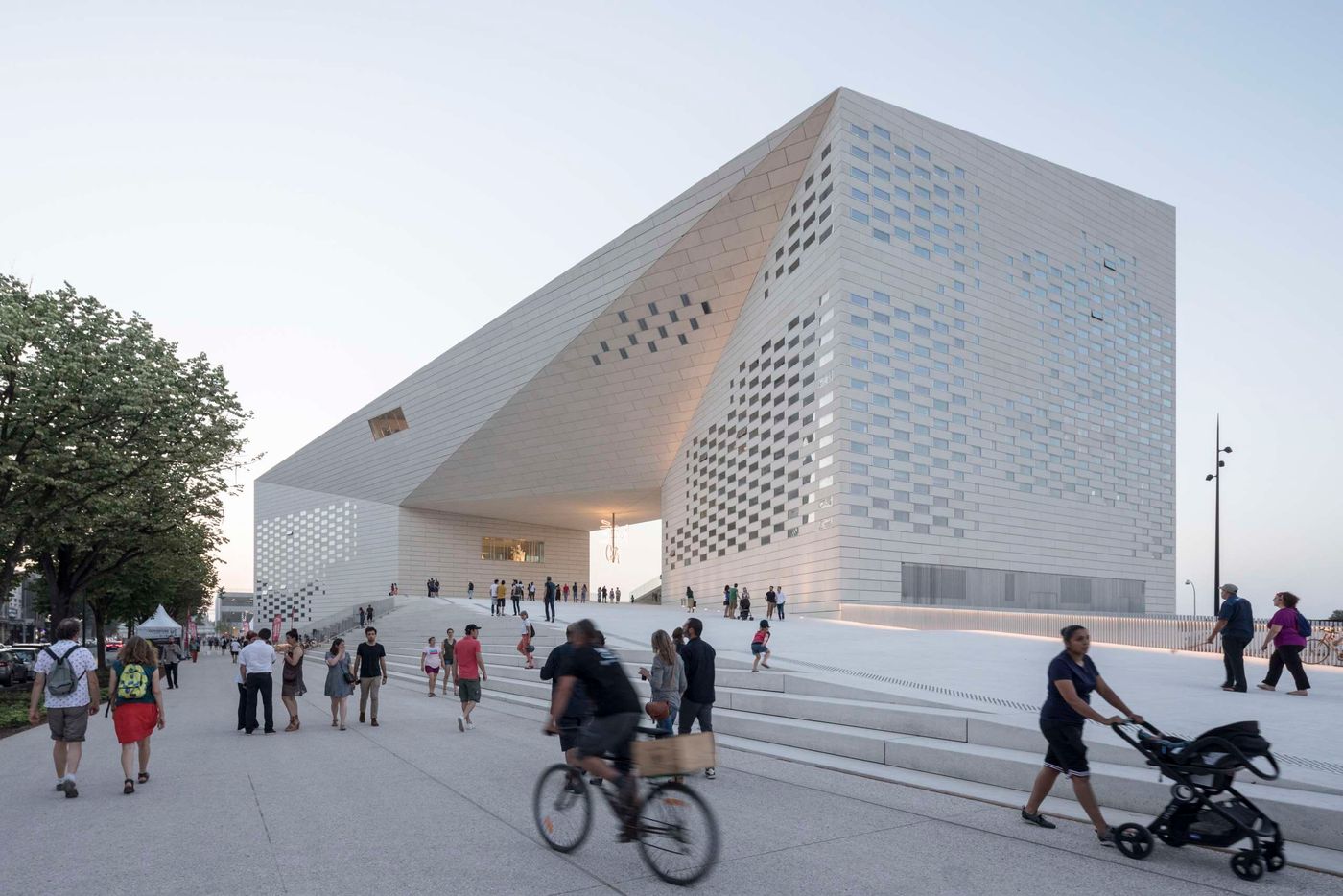
MÉCA: Bordeaux’s Monumental Cultural Gateway by BIG and Freaks Architects
Words by Eric David
Location
Bordeaux, France
MÉCA: Bordeaux’s Monumental Cultural Gateway by BIG and Freaks Architects
Words by Eric David
Bordeaux, France
Bordeaux, France
Location
How do you preserve the autonomy of three independent cultural institutions housed in a single building while also accommodating a large public plaza for people to hang out in? This, in a nutshell, was the brief that Copenhagen, New York and London-based architectural practice BIG-Bjarke Ingels Group and Paris-based Freaks freearchitects took on when designing Bordeaux’s new cultural mecca, the Maison de l’Économie Créative et de la Culture en Aquitaine, aptly abbreviated as MÉCA. Centrally located between the River Garonne and Saint-Jean train station, MÉCA brings together three regional arts agencies – FRAC for contemporary art, ALCA for cinema, literature and audiovisuals, and OARA for performing arts – which the team has incorporated into a monumental gateway organically integrated with the surrounding urban landscape.
Conceived as a loop, the building takes the form of a prismatic arch – imagine La Grande Arche by Danish Architect Johan Otto von Spreckelsen in Paris’ business district La Défense, only compressed, protracted and skewed – underneath which a new public space connects the Quai de Paludate street on the one side and the river promenade on the other, inviting people “to walk around, through, above and below the new cultural gateway”, as BIG’s Founding Partner and Creative Director Bjarke Ingels explains. The building’s porous form not only facilitates urban circulation but also enables the three institutions to occupy distinct sections, OARA and ALCA are housed in the two towers while FRAC takes over the lintel-like top section.
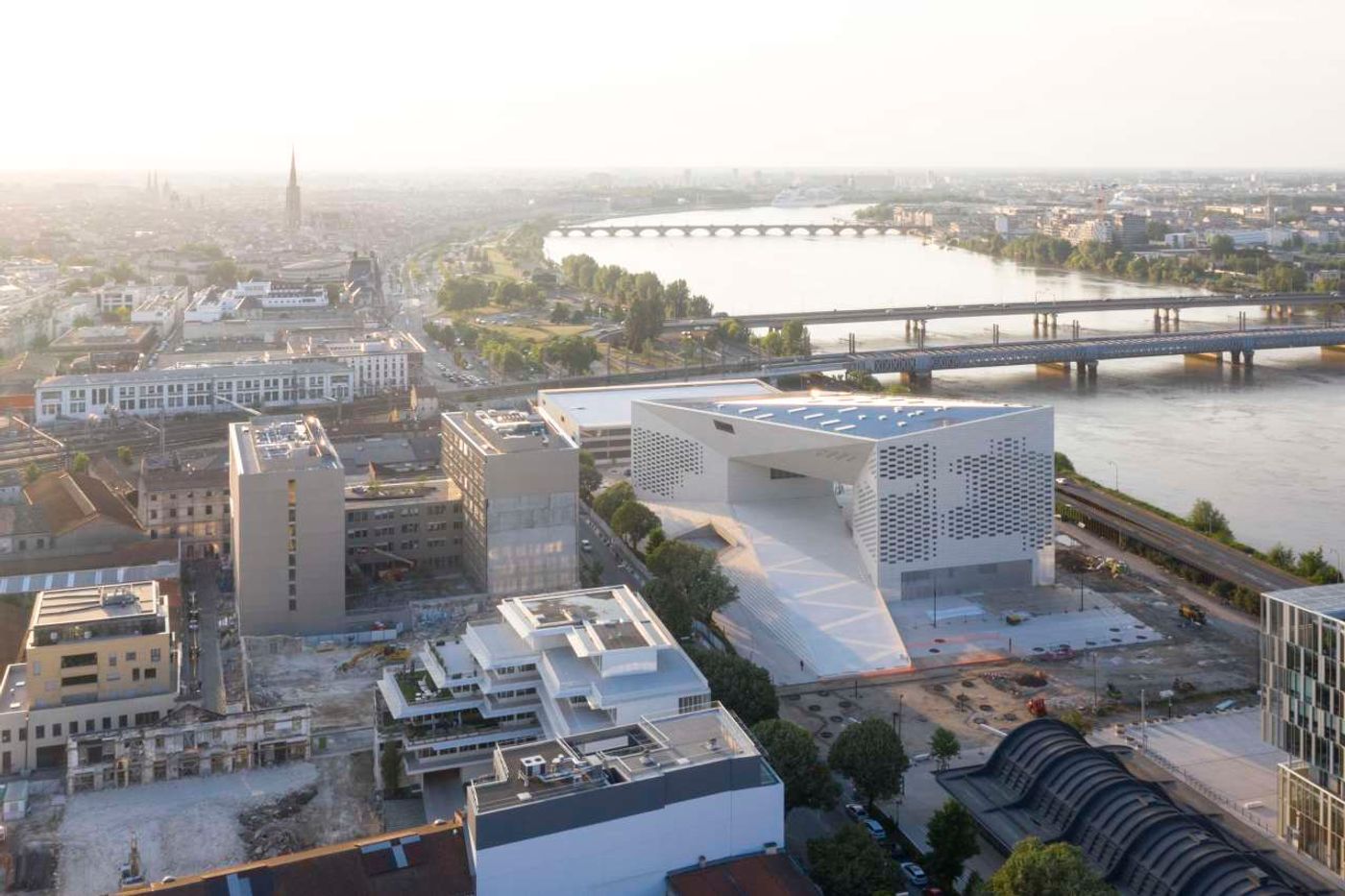
Photo by Laurian Ghinitoiu.
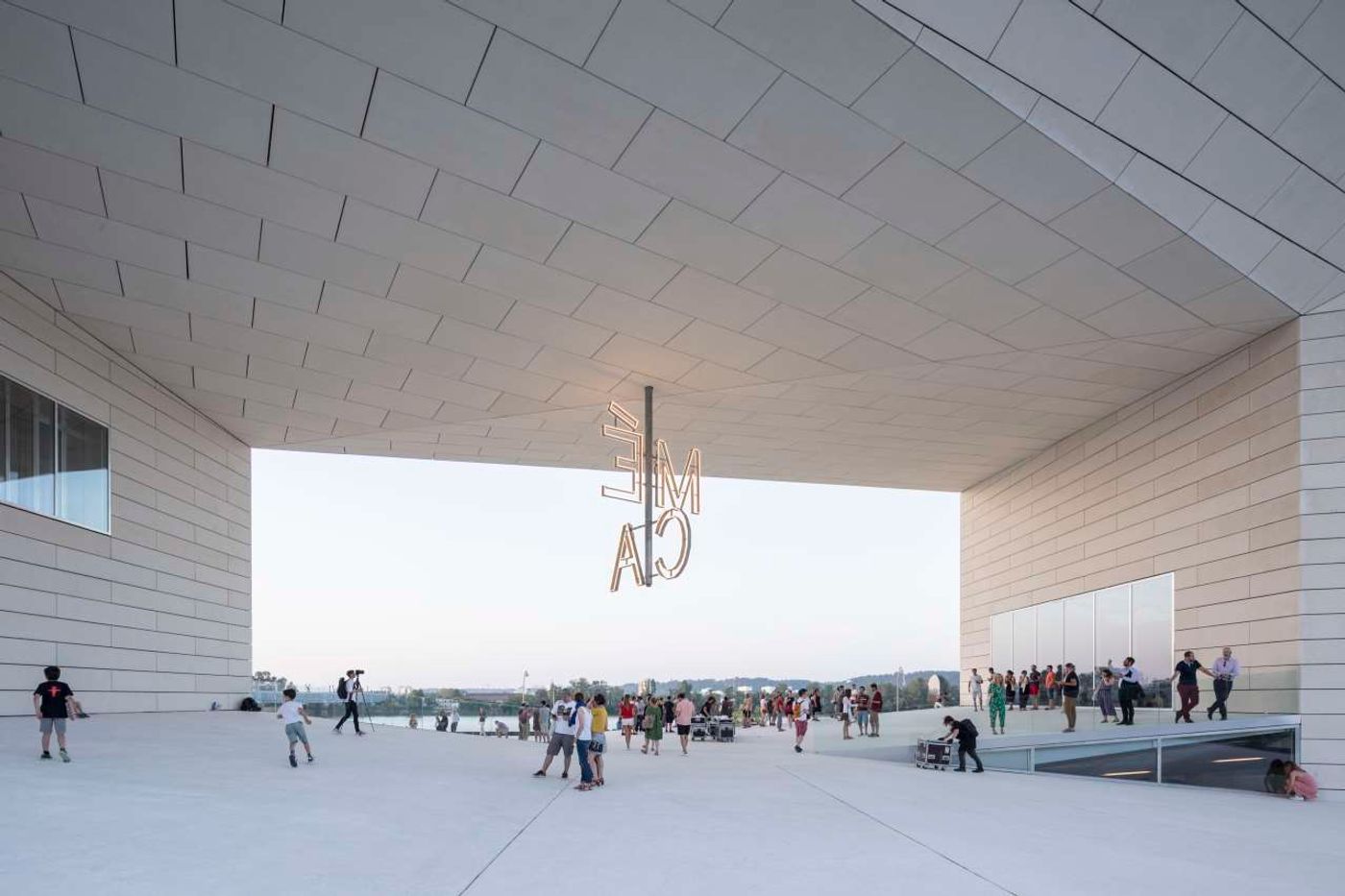
Photo by Laurian Ghinitoiu.
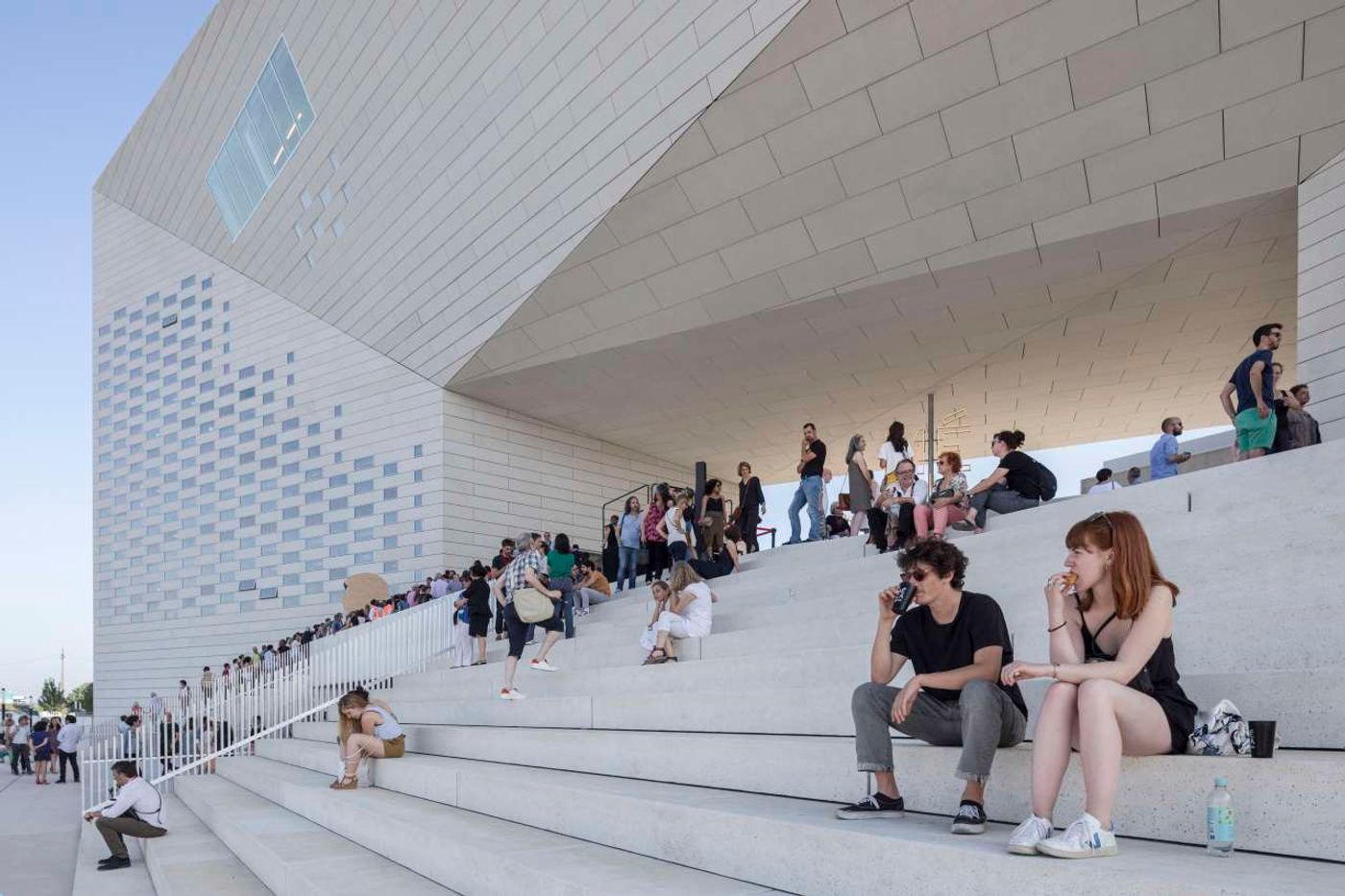
Photo by Laurian Ghinitoiu.
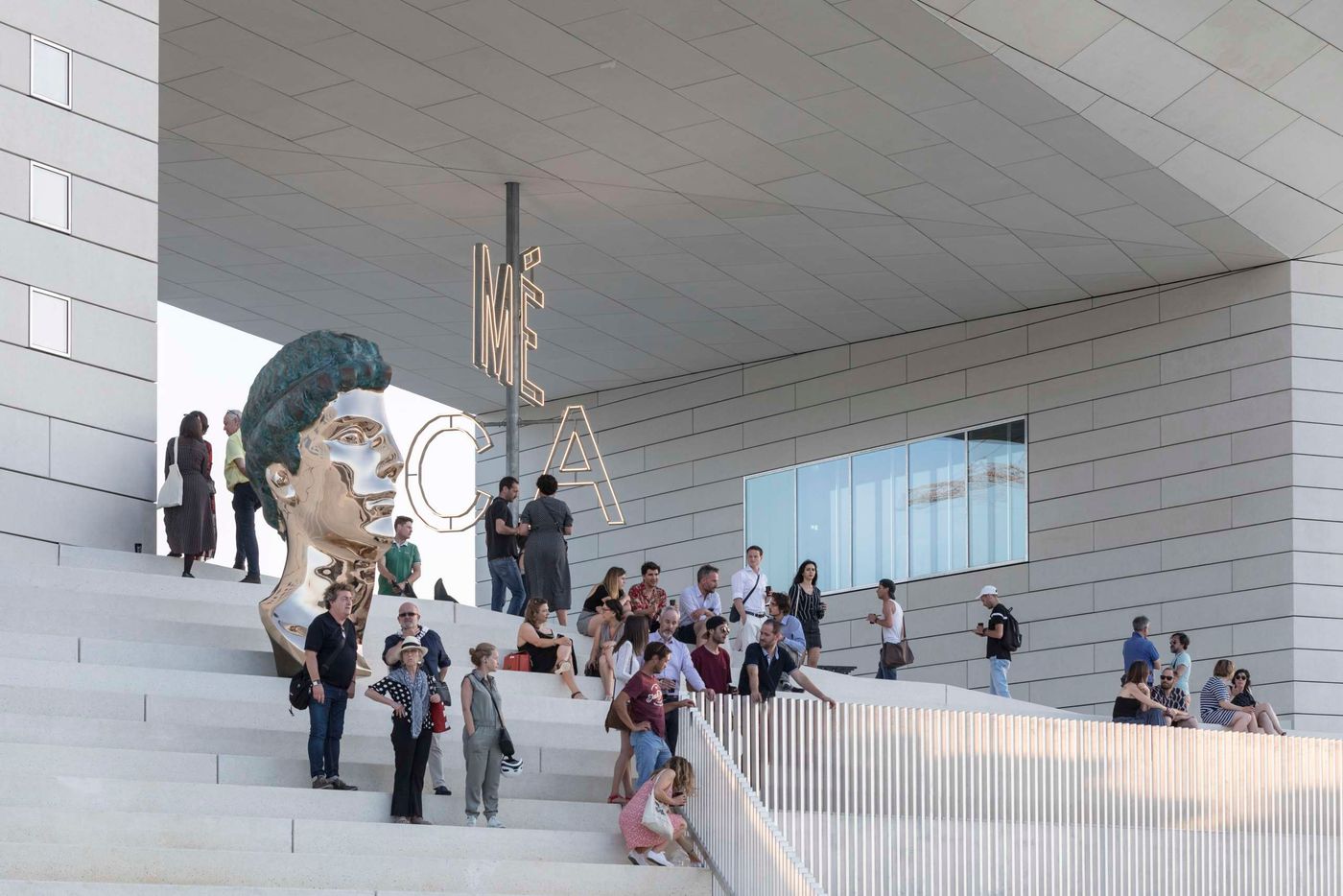
Photo by Laurian Ghinitoiu.
The building’s prismatic volume is formed by 4,800 prefabricated concrete panels weighing up to 1.6 tons, interspersed with various sized windows to control the amount of light reaching the interior. Sandblasted to emulate Bordeaux’s local sandstone in texture, the concrete shell is imbued with a pristine, sculptural quality that gleams in the sun, transforming MÉCA into a monumental edifice that is radical in form but familiar in sensibility.
A series of steps and ramps leads the public directly to the 1,100 square metre public plaza at the core of the building, where a suspended 7-metre high chandelier spelling MÉCA functions both as a sign and a beacon. Conceived as a multifunctional “urban living room” where the activities of the three institutions spill into, the plaza can accommodate a stage for concerts and theatrical spectacles or can be transformed into an extended gallery for sculptures and other art installations, as hinted by French artist Benoît Maire’s bronze bust of Hermes on permanent display – half of which is “missing” echoing the void at the building’s core. Large bleachers on either side of the building invite people to hang out and enjoy amazing views while large windows offer views inside the building, such as OARA’s dance studio and the lobby below the plaza, courtesy of an inclined mirror. As BIG Partner Jakob Sand says, “the visitors are almost participating in an installation, just by being there”.
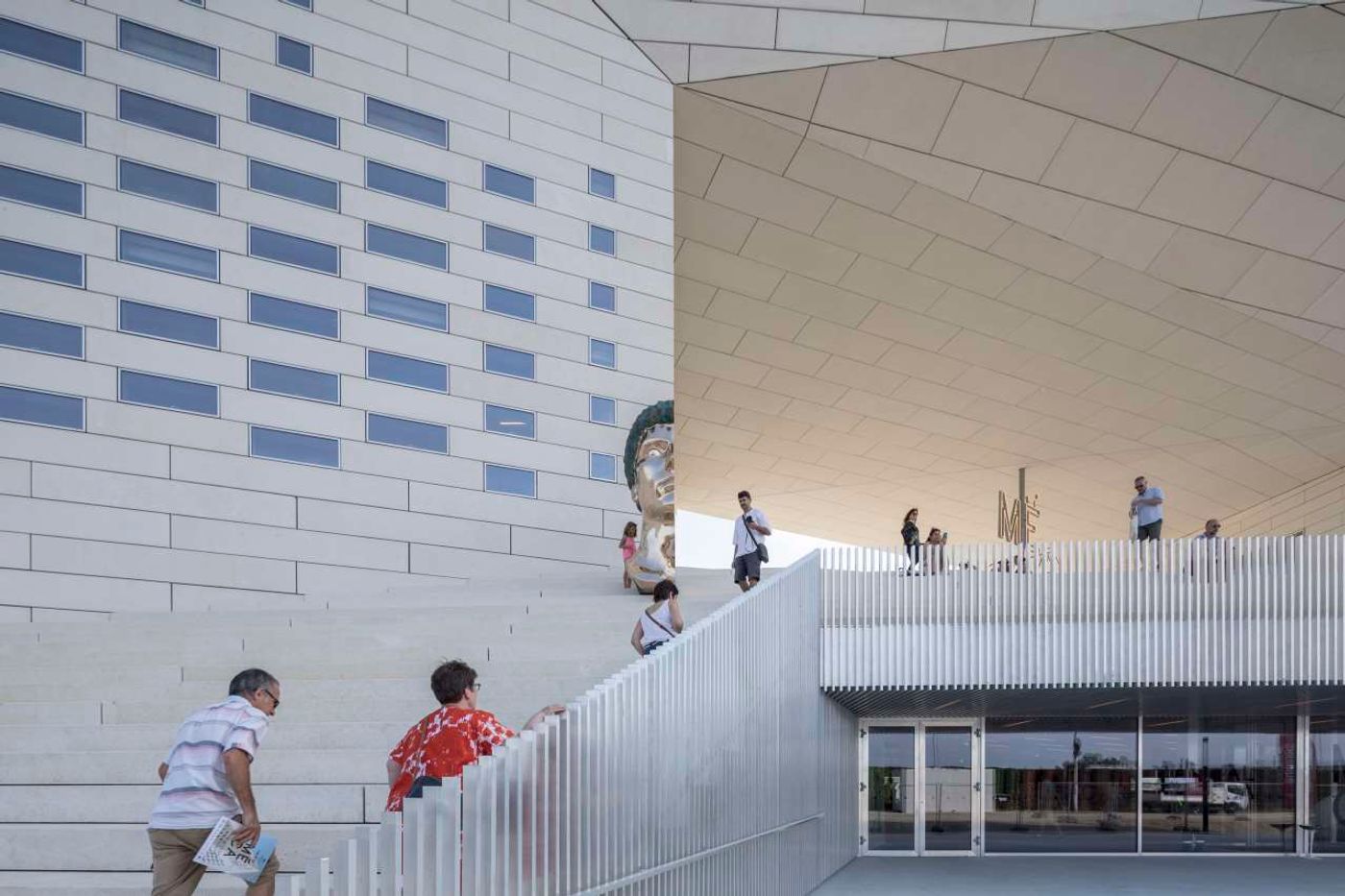
Photo by Laurian Ghinitoiu.
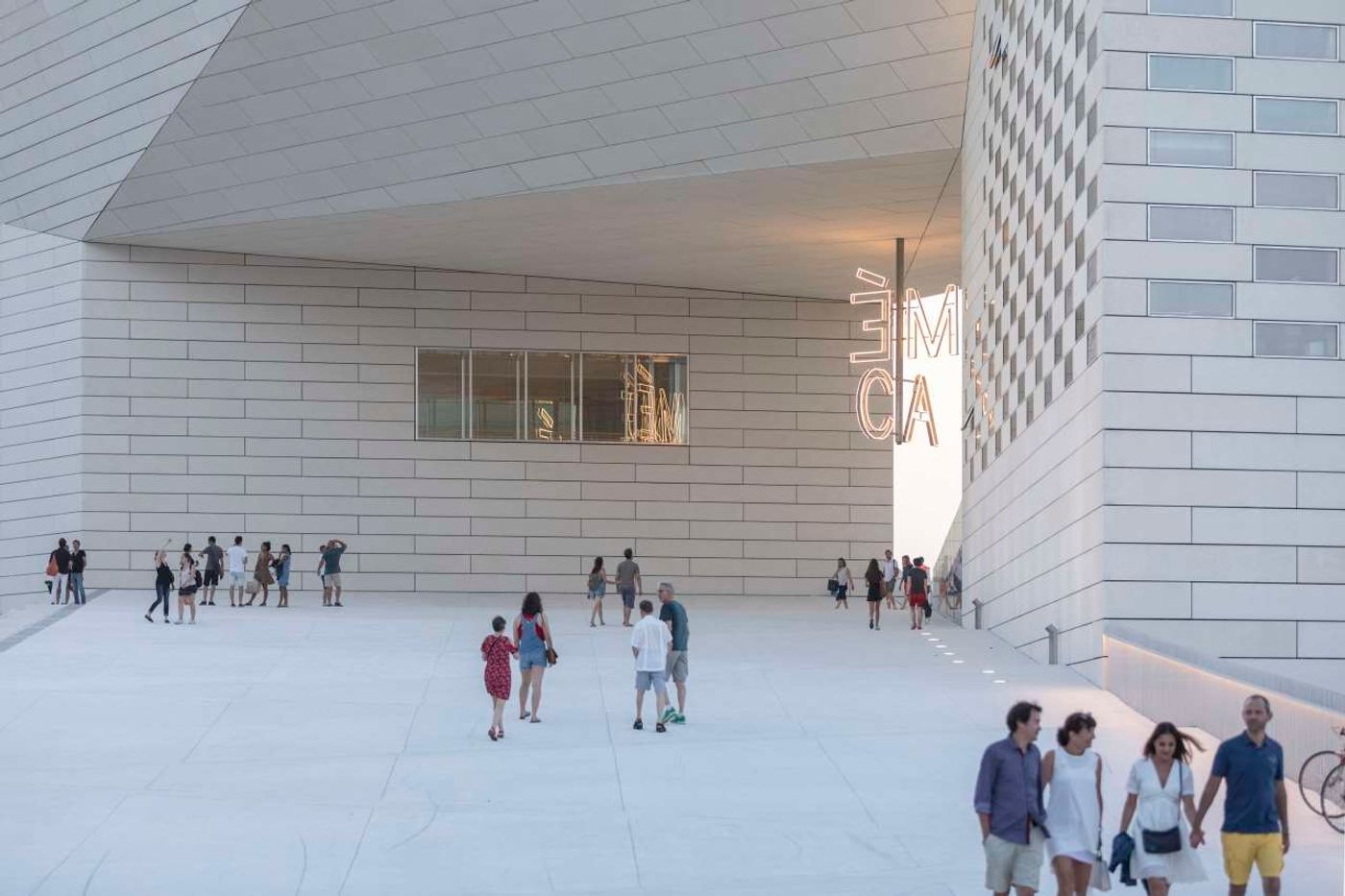
Photo by Laurian Ghinitoiu.
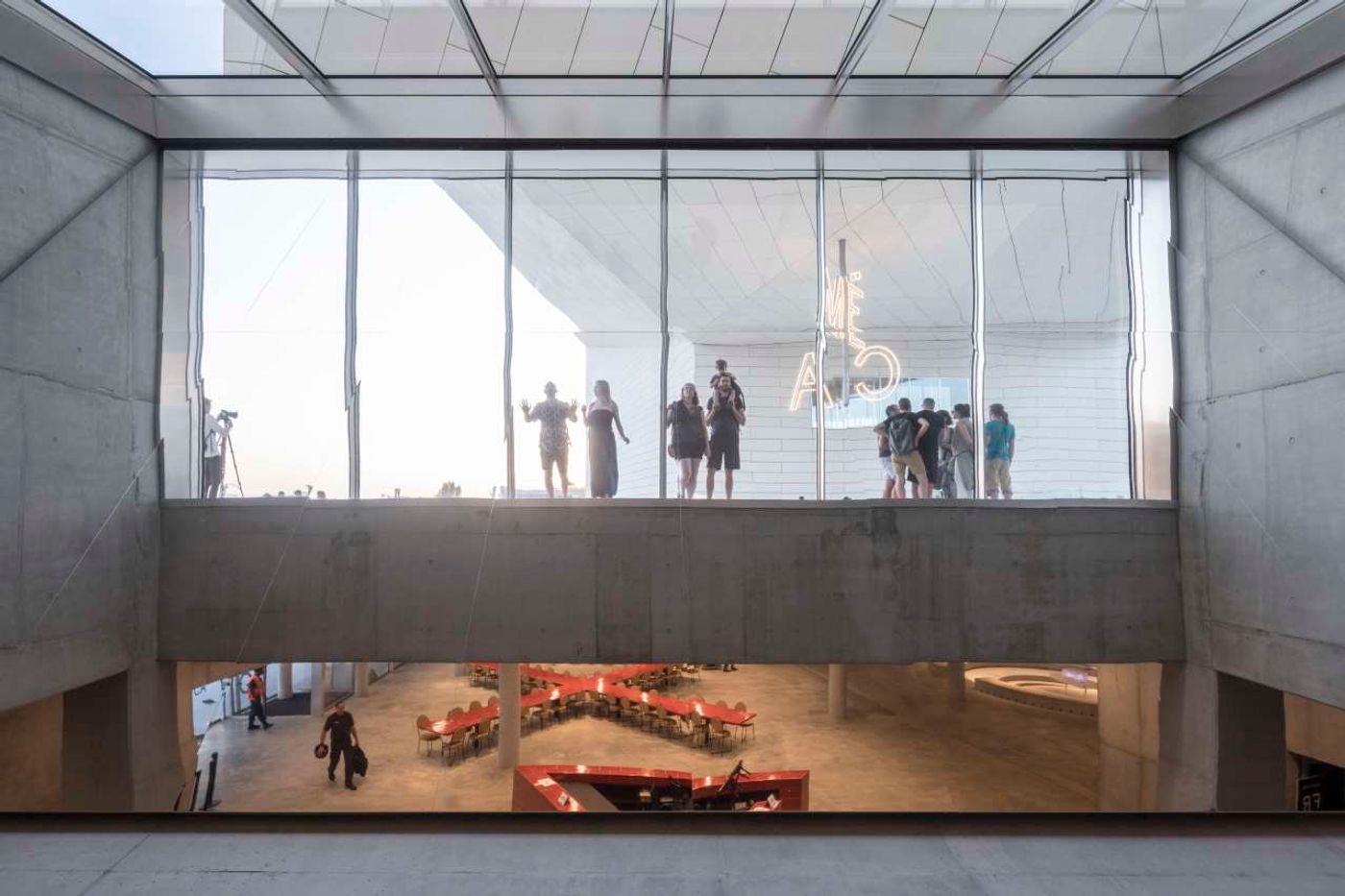
Photo by Laurian Ghinitoiu.
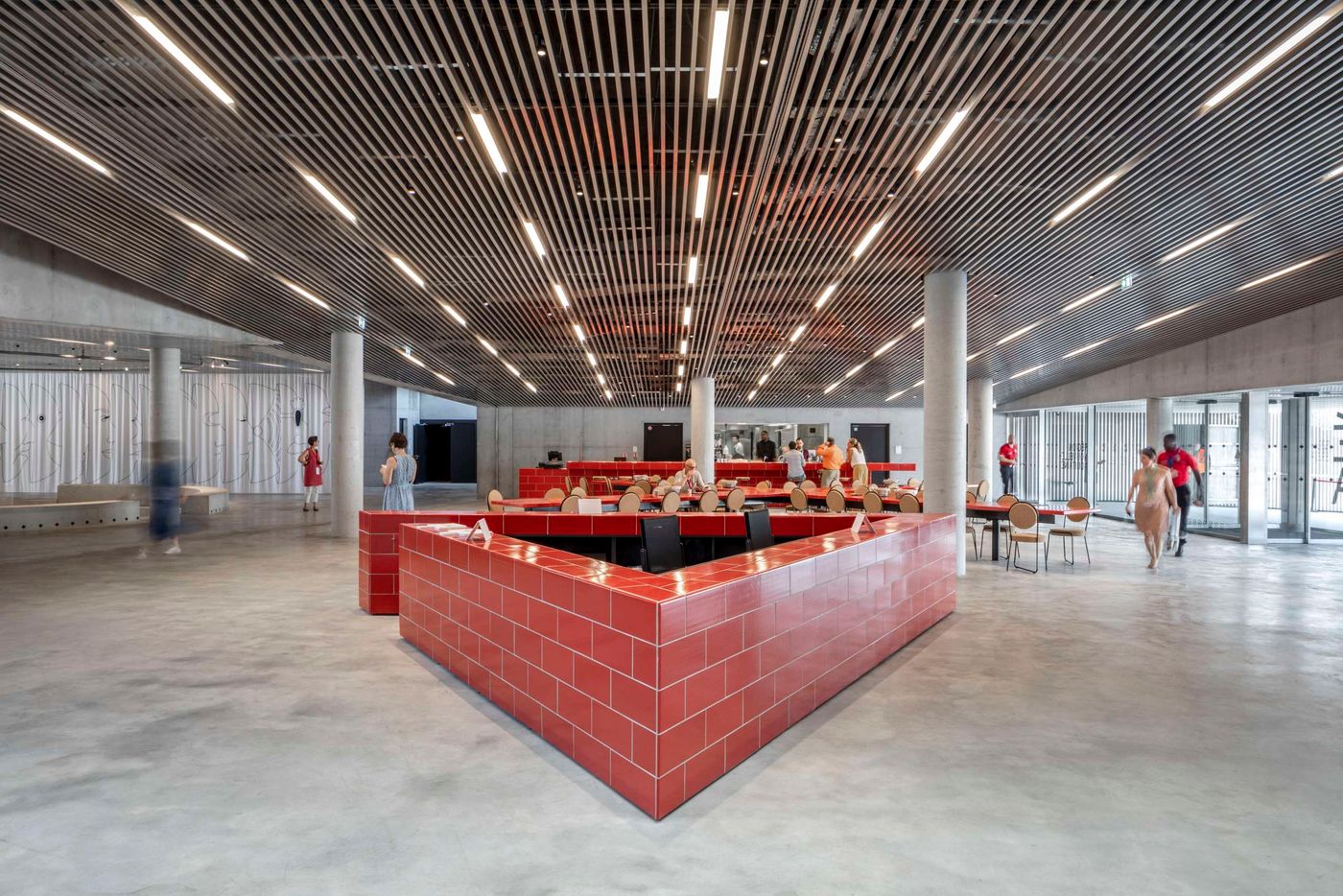
Photo by Florent Michel.
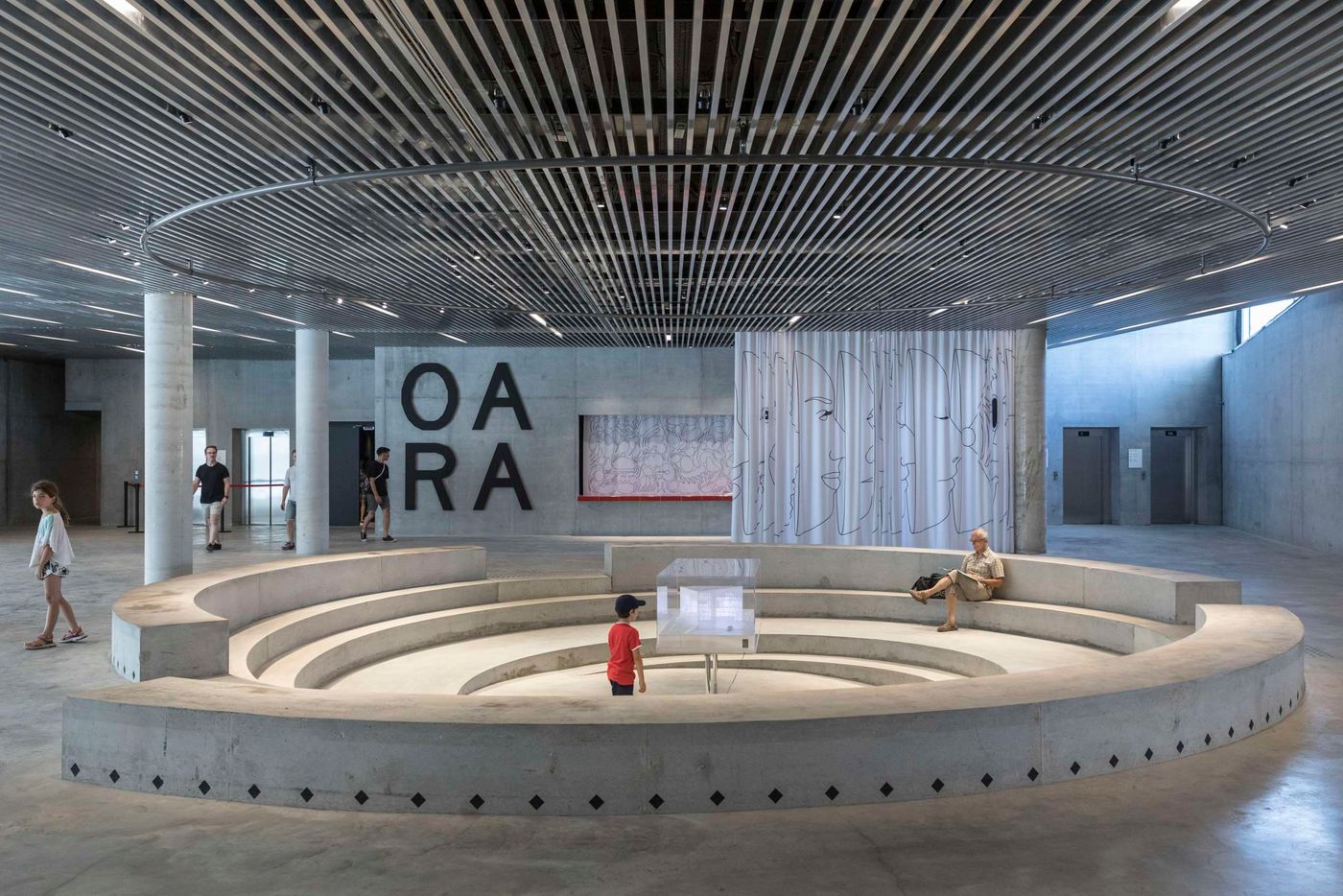
Photo by Laurian Ghinitoiu.
Below the public plaza, MÉCA’s lobby on the ground floor is centred on a spiral pit that functions as a lounge, while the adjacent Le CREM restaurant is furnished with red tables and cork chairs that stand out against the predominantly concrete surfaces. Designed by BIG, the restaurant’s furniture reference the city’s most loved export, Bordeaux wine.
From the same level, visitors can access OARA’s 250-seat theatre, which features flexible seating configurations and acoustic systems optimized by an all-black checkerboard panel of concrete, wood and perforated metal, while upstairs, filmgoers can view screenings at ALCA’s red-accented 80-seat cinema or visit the two production offices and project incubation area.
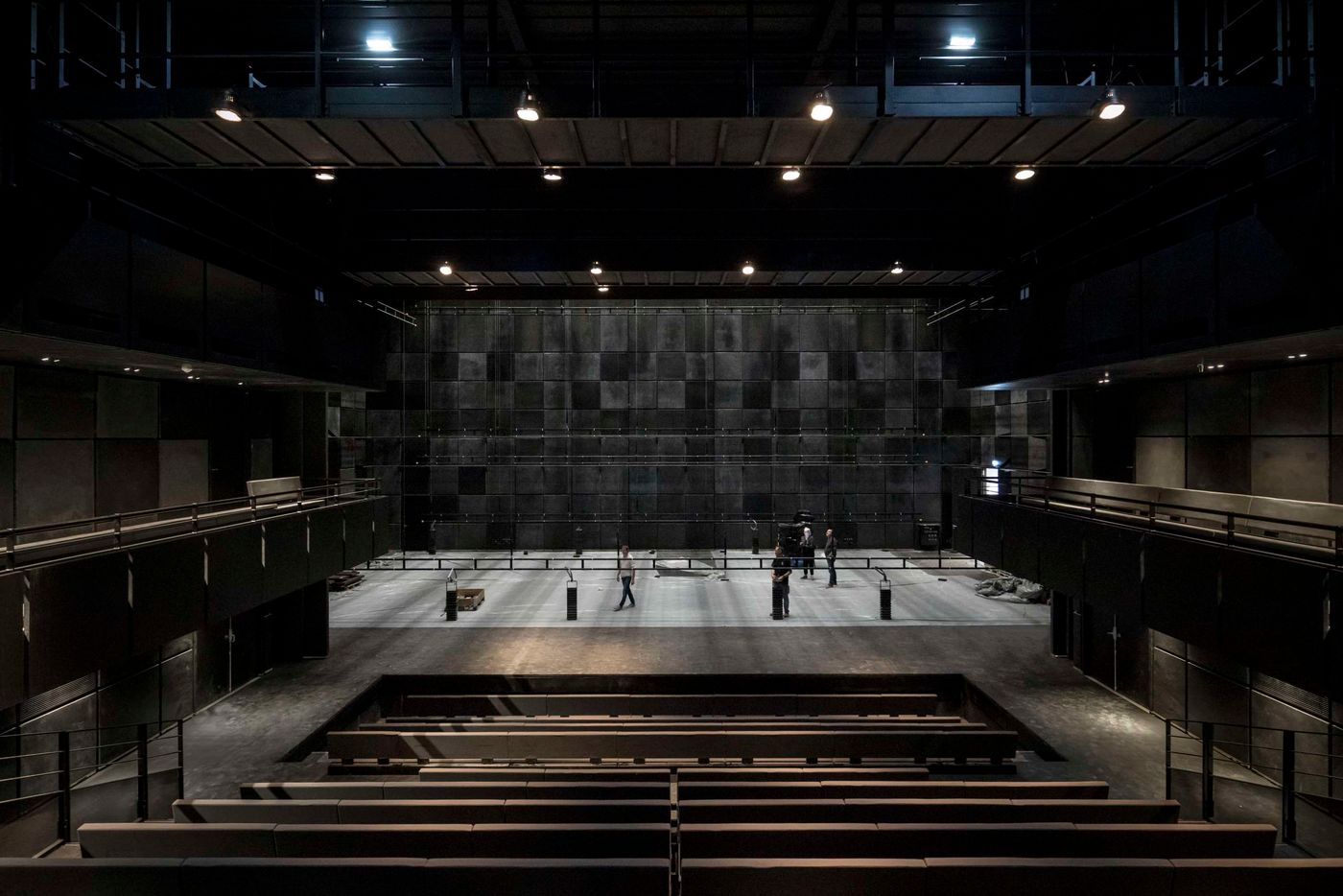
Photo by Laurian Ghinitoiu.
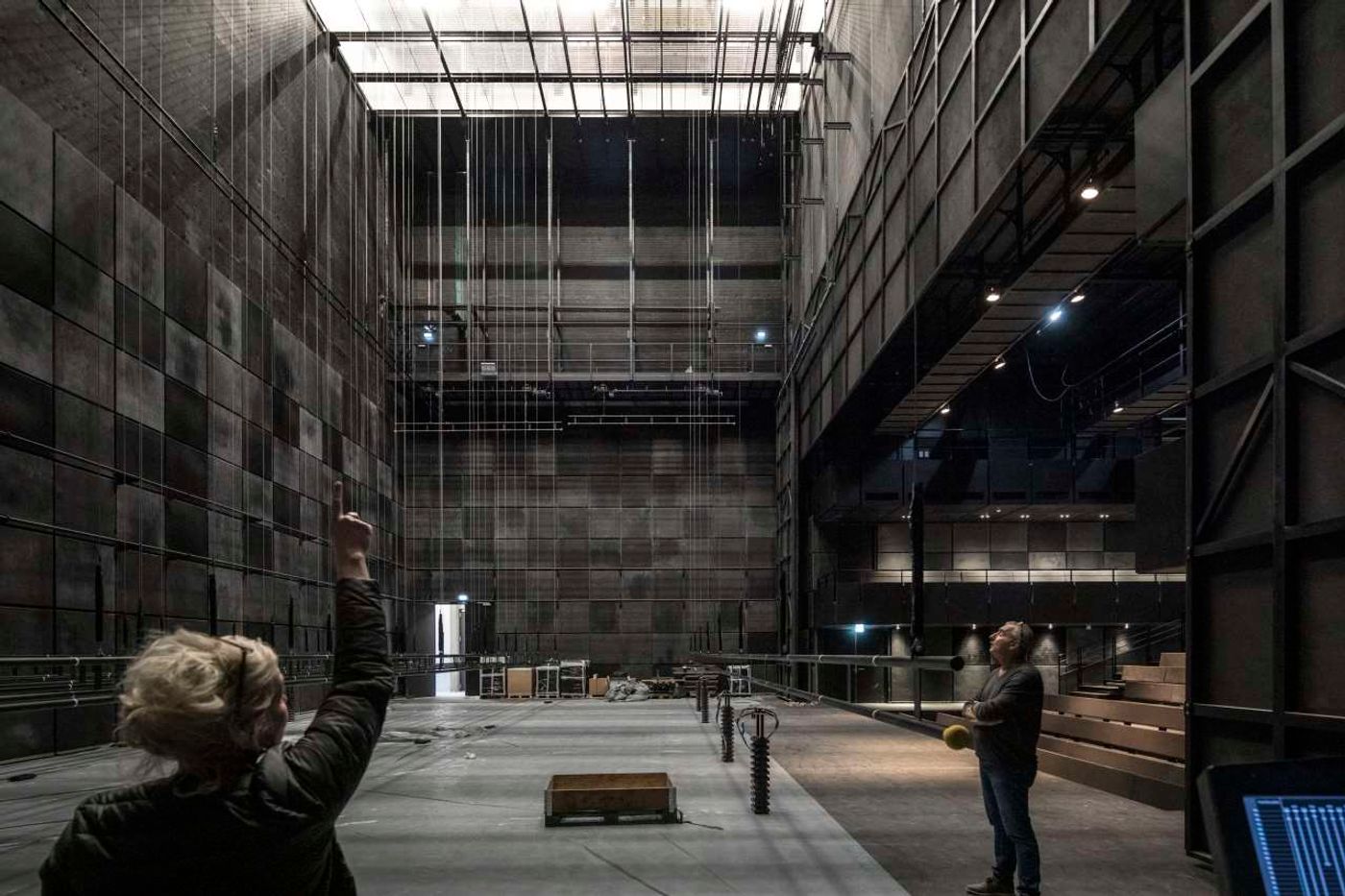
Photo by Laurian Ghinitoiu.
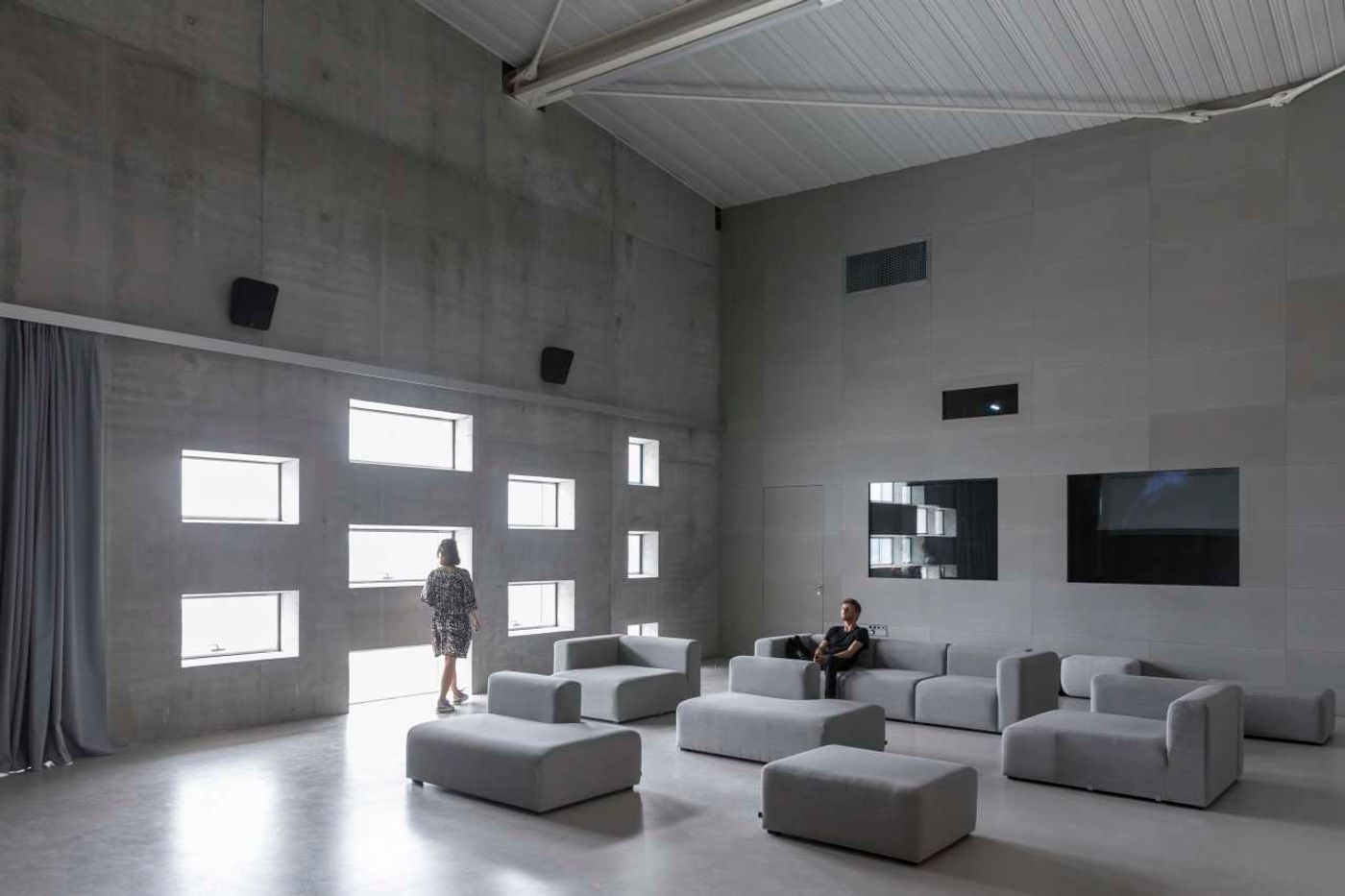
Photo by Laurian Ghinitoiu.
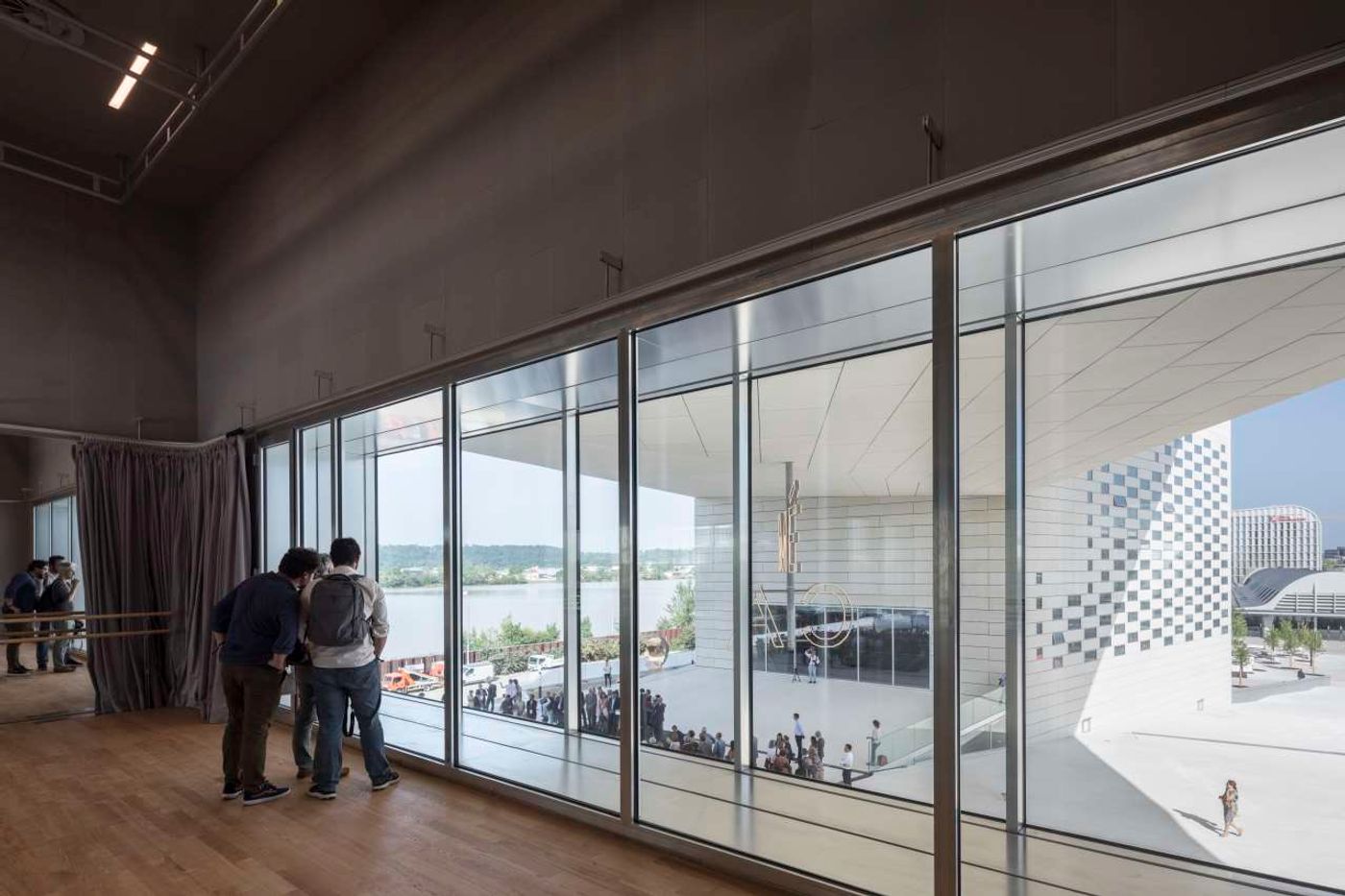
Photo by Laurian Ghinitoiu.

Photo by Laurian Ghinitoiu.
FRAC’s 7-metres high exhibition spaces occupy the top floors of the building, along with production studios for artists, storage facilities, a 90-seat auditorium and a café. The exhibition spaces open up to an expansive 850 square metre public roof terrace where large-scale art installations and performances can take place amid views of the city and the Basilica of St. Michael.
Meanwhile, in the plaza below, the first skateboarders have already been congregating, attracted by the stepped topography, as have couples who lounge on the steps sharing a bottle of Bordeaux. “So consider MÉCA’s urban room as a blank canvas”, as Bjarke Ingels says, “or rather an empty frame, for the Bordelais to fill it with their ideas, their creativity, their culture, and to make it their own”.

Photo by Laurian Ghinitoiu.
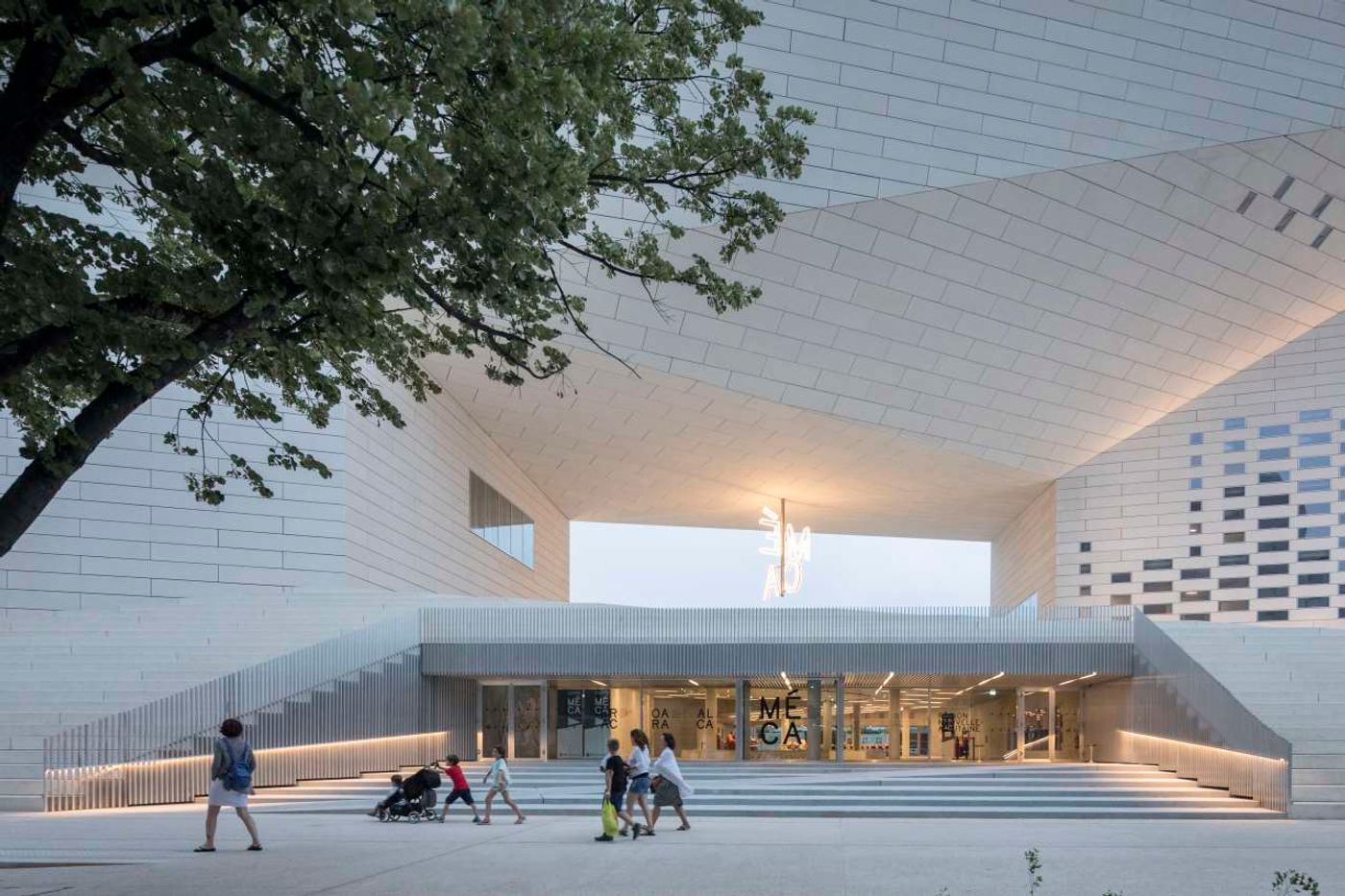
Photo by Laurian Ghinitoiu.

Photo by Laurian Ghinitoiu.
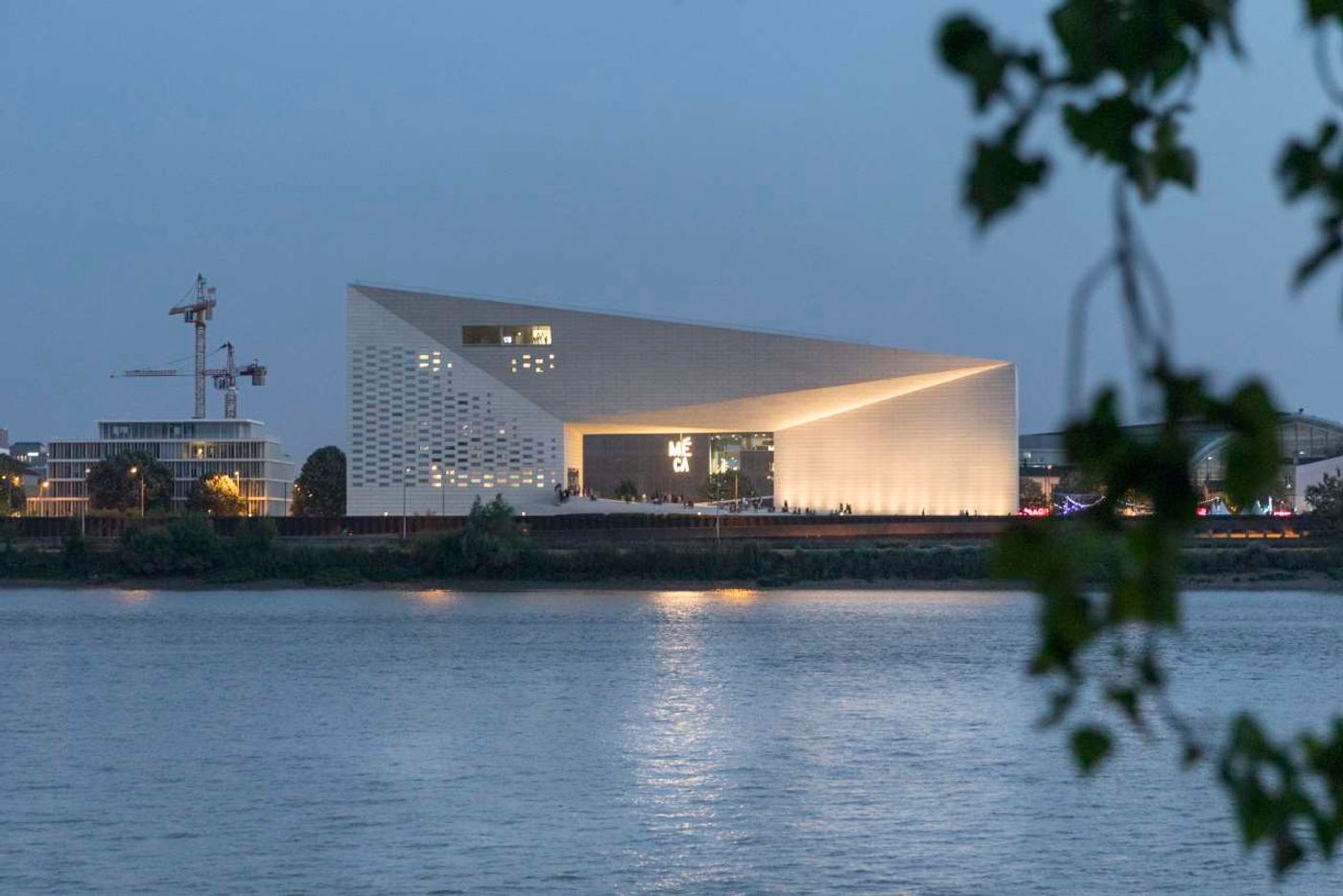
Photo by Laurian Ghinitoiu.